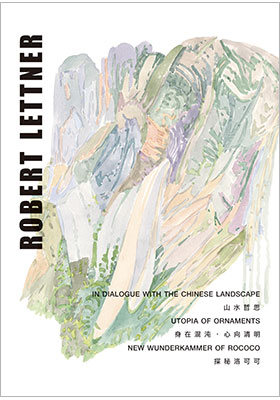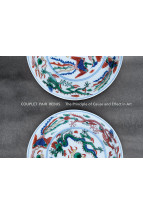Robert Lettner
In Dialogue with the Chinese Landscape / Utopia of Ornaments / New Wunderkammer of Rococo 山水哲思/身在混沌,心向清明/探秘洛可可
ISBN : 978-988-19024-6-7
Distributed for HKU Museum and Art Gallery 香港大學美術博物館
September 2017
80 pages, 8.25″ x 11.75″, color illustrations throughout
- HK$200.00
Also Available on
Published in conjunction with three Robert Lettner (1943–2012) exhibitions staged across Hong Kong in 2017, this volume surveys artworks from the Austrian artist’s long career from the 1960s until his death, focusing specifically on his interest in representing—both figuratively and in abstract form—landscapes. It is the first publication of his work to appear in English and Chinese.
Lettner immersed himself in the natural world, vividly depicting his vision on paper—whether representing the vast ocean, the sun’s warmth or an endless line of mountains and clouds. As an influential artist in Central Europe, Lettner also was attracted to traditional art forms from the East, particularly the shan shui philosophy of landscape painting. He explored the artistic world through a language that combined the Chinese aesthetics of the ‘void’ and watercolour landscapes. Lettner’s distinctive ornamental forms were based, in part, on his research and improvisation of the Mustard Seed Garden Manual of Painting (1679–1701).
Based in Austria, Lettner devoured Eastern materials and techniques through the later seventeenth-century publication and his oeuvre was visibly influenced by his intense study. Fascinated with brush strokes and watercolours, it was the void more than constructed landscapes that left its mark on Lettner’s paintings, and add an arguably more abstract and modern element to his well-versed vocabulary. This foreign influence acknowledged, it remains worth noting that Lettner—however fascinated with the Chinese landscape—continued to use his own palette of colours and represented with his pastels; for example, the summer light and nuanced intensity he would have found present painting in Southern Europe. His green-on-green landscapes are, without exaggeration, more of a play on the often monochromatic Chinese variant and, still, they are hybrid at best.
The integration of contemporary art and traditional culture is an inevitable trend in a globalising world. Lettner retained the beauty of Western landscape paintings while incorporating the essence of Eastern art; he sought to develop dialogues between forms of Chinese and Western paintings.
與此前在香港舉辦的三場羅伯特‧萊特納(1943–2012)展覽相結合,此作品集涵蓋作品範圍之廣,前可追溯至該藝術家的職業生涯之始──上世紀六十年代,而終於其生命的結束。同時,此雙語版本也是羅伯特·‧萊特納的作品首次以英文或中文呈現於眾。
無論是海洋的浩瀚,太陽的溫暖,還是山脈雲朵的綿延無盡,萊特納沉浸於自然之中,將自己的願景化為紙上的妙筆丹青。作為一名在中歐舉足輕重的藝術家,萊特納同時也被傳統的東方藝術──尤其是風景畫中的山水哲學所吸引。他開創了將中式「留白」的美學與西式水彩風景畫相結合的新式語言,以探索更深層的藝術世界。在融入東方藝術精華的同時,萊特納也保留了西方風景畫之美,並以此試圖開啟東西方繪畫形式之間的對話。
萊特納獨具一格的裝飾形式靈感,部分來源於他對《芥子園畫譜》(1679–1701)的研究與即興創作。在奧地利時,通過對十七世紀後期出版物的研究,萊特納如饑似渴地學習著東方的材料與技術,其成果在他的作品中是顯而易見的。由於萊特納對筆觸線條及水彩的癡迷,「留白」比結構式景觀在他的作品中佔據了更重要的地位,從而也在他精通的繪畫詞彙中加入了一種可論證的抽象與現代元素。這種異國美學的影響毋庸置疑,然而有一點卻不容忽視──雖然萊特納對中國山水畫甚為著迷,但正如他從南歐畫作中發現了夏日光線與其微妙的強度,他始終選擇使用自己西式的畫筆和調色板去展現作品色彩。



